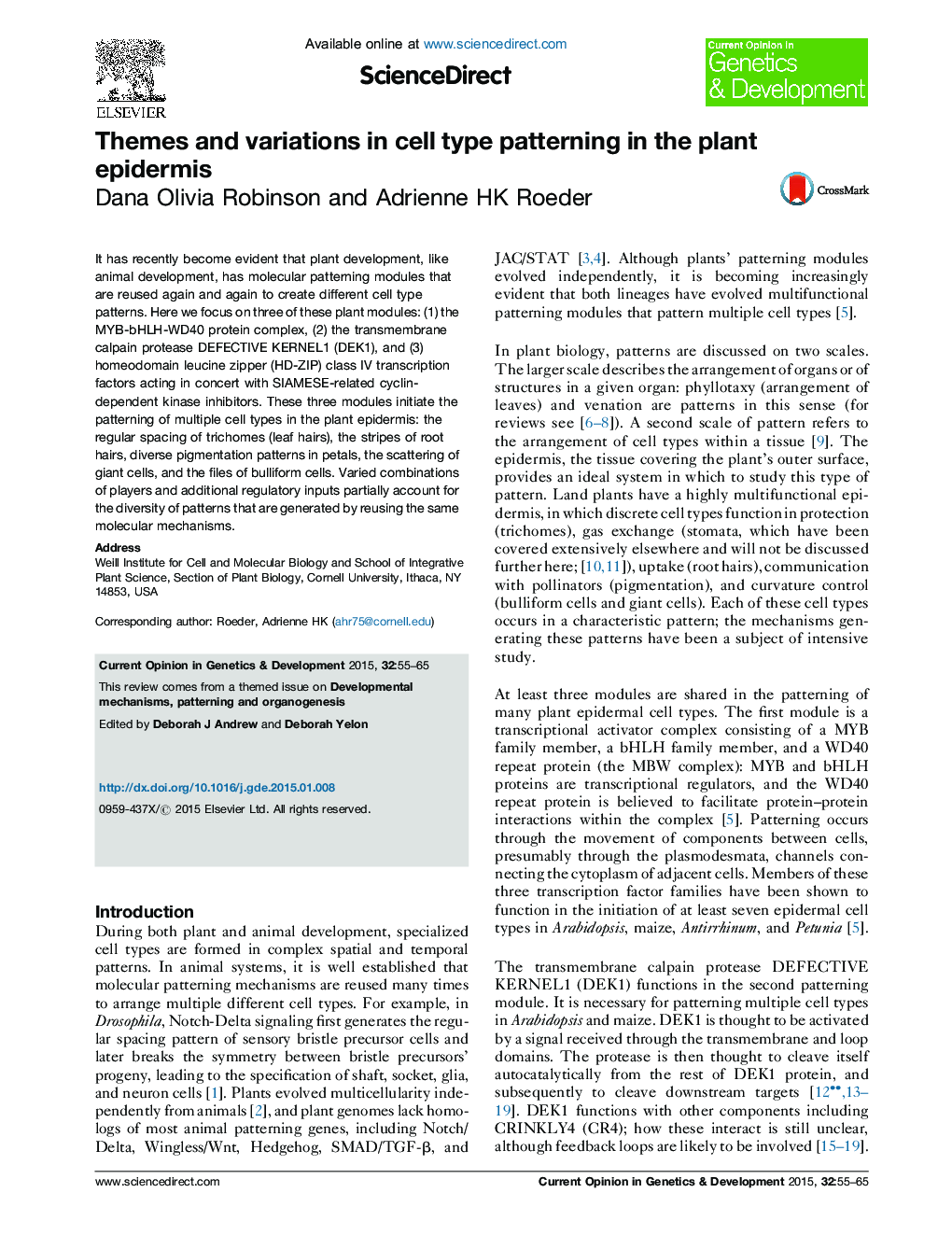| Article ID | Journal | Published Year | Pages | File Type |
|---|---|---|---|---|
| 5893113 | Current Opinion in Genetics & Development | 2015 | 11 Pages |
Abstract
It has recently become evident that plant development, like animal development, has molecular patterning modules that are reused again and again to create different cell type patterns. Here we focus on three of these plant modules: (1) the MYB-bHLH-WD40 protein complex, (2) the transmembrane calpain protease DEFECTIVE KERNEL1 (DEK1), and (3) homeodomain leucine zipper (HD-ZIP) class IV transcription factors acting in concert with SIAMESE-related cyclin-dependent kinase inhibitors. These three modules initiate the patterning of multiple cell types in the plant epidermis: the regular spacing of trichomes (leaf hairs), the stripes of root hairs, diverse pigmentation patterns in petals, the scattering of giant cells, and the files of bulliform cells. Varied combinations of players and additional regulatory inputs partially account for the diversity of patterns that are generated by reusing the same molecular mechanisms.
Related Topics
Life Sciences
Biochemistry, Genetics and Molecular Biology
Developmental Biology
Authors
Dana Olivia Robinson, Adrienne HK Roeder,
